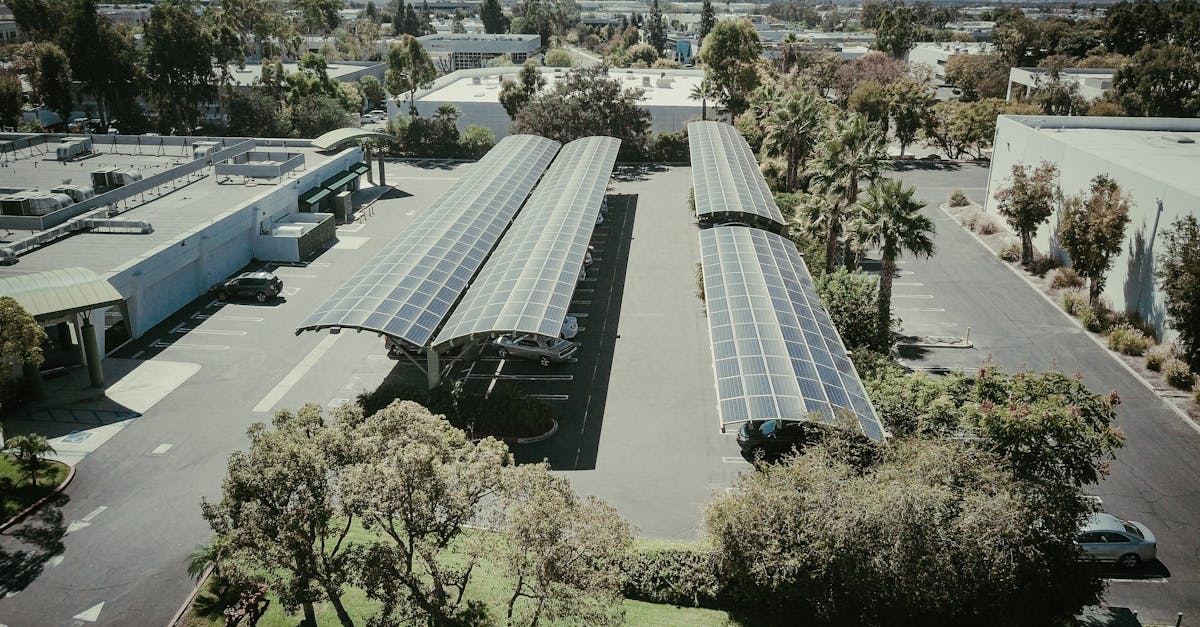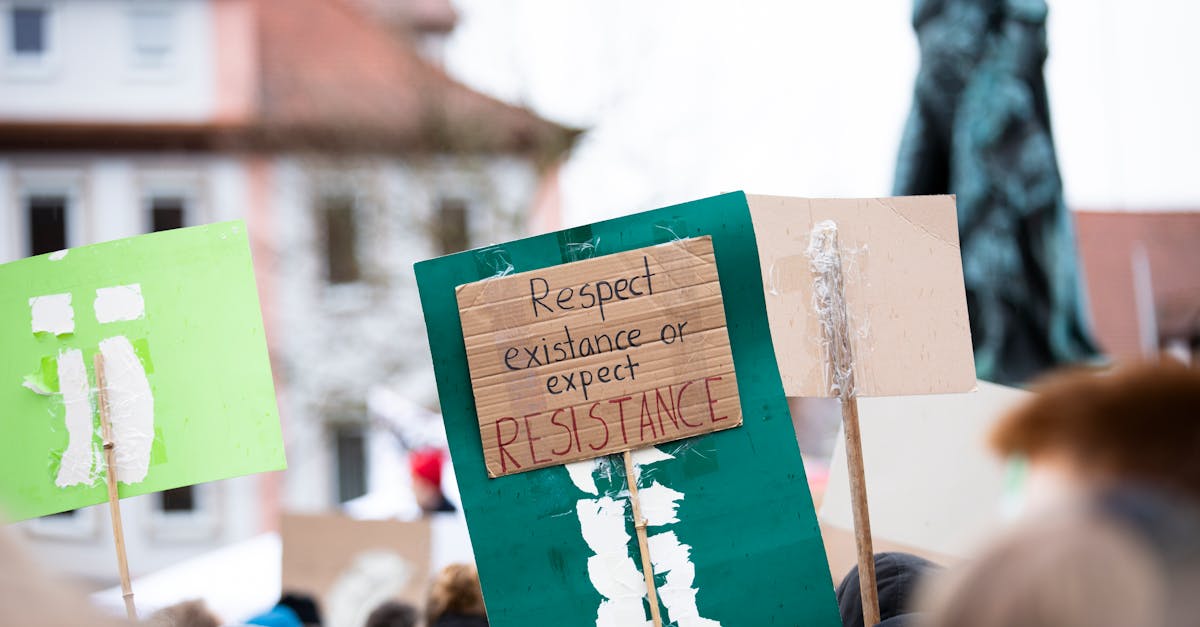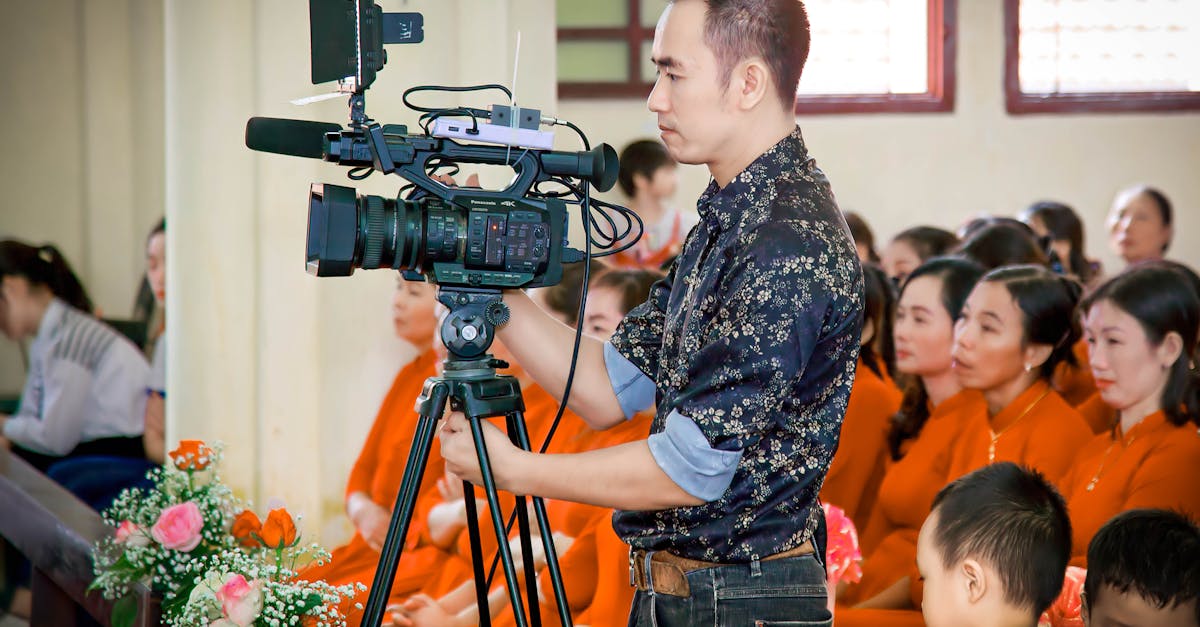I’ve always been fascinated by how filmmakers breathe new life into forgotten visual treasures. Found footage documentaries transform dusty archives into powerful storytelling vehicles, revealing histories that might otherwise remain buried in institutional vaults.
In recent years, I’ve watched this genre explode as directors increasingly mine the past to illuminate our present. From meticulously restored newsreels to deteriorating home movies, these archival fragments offer authentic glimpses into bygone eras that no modern recreation could match. What’s remarkable isn’t just the historical value of these materials but how contemporary filmmakers repurpose them to create entirely new narratives and emotions.
The Evolution of Found Footage in Documentary Filmmaking
Found footage documentaries have transformed dramatically since their inception, evolving from experimental films using limited archival resources to sophisticated productions drawing from vast digital repositories. This evolution reflects both technological advances and shifting creative approaches that have expanded the genre’s possibilities.
From Historical Archives to Digital Collections
Archival footage usage in documentaries began with physical film reels stored in government and institutional archives that required in-person access. Early documentary pioneers like Esfir Shub, who created “The Fall of the Romanov Dynasty” (1927) by repurposing czarist newsreels, demonstrated the political power of repurposing existing footage. The mid-20th century saw filmmakers like Emile de Antonio using news footage in “Point of Order” (1964) to reexamine the McCarthy hearings, establishing found footage as a tool for historical revision.
Digital technology revolutionized archival access in the 1990s and 2000s, creating unprecedented opportunities for filmmakers. Previously inaccessible collections became available through digitization projects at institutions like the National Archives and the Library of Congress. Today’s filmmakers can access millions of hours of footage through online platforms including:
- Digital archives like British Pathé and AP Archive with searchable interfaces
- Footage licensing services such as Getty Images and Pond5
- User-generated content from YouTube, social media, and personal devices
- Specialized collections focusing on specific historical periods or themes
This democratization of access has dramatically expanded the creative palette for documentary filmmakers while raising complex questions about context, authenticity, and ethical usage.
Notable Milestones in Found Footage Documentaries
Key productions have marked evolutionary leaps in how archival material can be deployed in documentary storytelling. “The Atomic Cafe” (1982) by Jayne Loader and Kevin Rafferty pioneered the technique of using solely found footage—government films, news clips, and advertisements—to create a satirical critique of nuclear preparedness propaganda. This approach demonstrated how recontextualization could reveal hidden meanings in historical materials.
The documentary landscape further evolved with Adam Curtis’s “The Century of the Self” (2002), which combined BBC archival footage with innovative narration to explore how psychological theories shaped consumerism. Asif Kapadia’s “Senna” (2010) and “Amy” (2015) demonstrated how found footage could create intimate character studies without traditional interviews, relying entirely on existing video to construct emotionally resonant narratives.
Recent technological innovations have pushed the boundaries further:
| Documentary | Year | Innovation |
|---|---|---|
| “Apollo 11” | 2019 | Used newly discovered 70mm footage and digital restoration techniques |
| “The Social Dilemma” | 2020 | Combined found footage with dramatizations |
| “MLK/FBI” | 2020 | Utilized declassified FBI files alongside archival imagery |
| “Summer of Soul” | 2021 | Restored forgotten concert footage with contemporary interviews |
These milestones highlight the genre’s evolution from simply using archival material as evidence to employing it as a sophisticated storytelling medium with its own aesthetic and rhetorical power. I’ve observed that today’s most compelling found footage documentaries don’t merely present historical material—they transform it through creative editing, sound design, and contextual framing to generate new meanings and emotional responses.
Aesthetic and Narrative Techniques in Archive-Based Films
Archive-based filmmakers employ distinctive techniques to transform historical footage into compelling narratives that resonate with modern audiences. These creative approaches elevate found footage from mere historical documentation to artistic expression, allowing viewers to experience the past in emotionally impactful ways.
Creating New Meaning Through Juxtaposition
Juxtaposition stands as the foundational editing technique in archive-based documentaries, creating powerful narrative connections between seemingly unrelated materials. Filmmakers like Adam Curtis masterfully position disparate archival clips alongside each other to construct persuasive arguments about power structures and social phenomena. In “Hypernormalisation” (2016), Curtis juxtaposes footage of Wall Street celebrations with scenes of urban decay, instantly communicating complex ideas about economic inequality without explicit narration.
This technique creates what film theorists call the “third meaning” – a new understanding that emerges from the collision of two distinct images. Documentary editor Walter Murch refers to this as “contextual alchemy,” where the relationship between images becomes more significant than the images themselves. Effective juxtaposition works on multiple levels:
- Temporal contrasts: Placing footage from different time periods side by side to highlight change or continuity
- Thematic connections: Linking visually similar but contextually different moments to reveal patterns
- Ironic commentary: Using contradictory images to challenge official narratives or expose hypocrisy
- Emotional punctuation: Following disturbing content with lighter material to provide viewers emotional release
Director Göran Olsson’s “Concerning Violence” (2014) exemplifies sophisticated juxtaposition by combining colonial-era promotional films with footage of African liberation movements, creating a powerful critique of European imperialism without heavy-handed explanation.
The Role of Sound Design and Music
Sound design transforms silent or sonically limited archival footage into immersive experiences that connect emotionally with contemporary audiences. Unlike traditional documentaries where sound often serves the visuals, archive-based films frequently reverse this relationship, using audio as the primary storytelling device.
Music selection provides emotional context and temporal anchoring in found footage documentaries. In “Summer of Soul” (2021), Questlove meticulously preserved the original concert audio while making subtle enhancements that maintained authenticity while meeting modern audio expectations. The film’s power comes from this sonic fidelity, allowing viewers to experience the 1969 Harlem Cultural Festival as both historical document and vibrant concert film.
Strategic sound design approaches include:
- Creative foley work: Adding historically accurate ambient sounds to silent footage
- Atmospheric soundscapes: Using subtle audio beds to establish mood and period authenticity
- Contrapuntal audio: Employing sound that contradicts the visuals to create tension or irony
- Voice modulation: Adjusting archival interviews or narration for clarity while preserving character
Brett Morgen’s “Montage of Heck” (2015) demonstrates innovative sound design by animating Kurt Cobain’s journal entries and setting them to newly created soundscapes that mirror Nirvana’s musical aesthetic. This approach doesn’t simply present Cobain’s writings – it translates them into the auditory language of his artistic expression, creating a multimedia experience that captures his creative process more effectively than conventional biographical techniques.
Ethical Considerations When Reviving Archival Materials
Ethical dilemmas permeate every aspect of working with historical footage in documentary filmmaking. As filmmakers excavate and repurpose archival materials, they must navigate complex moral territory that extends beyond mere legal compliance.
Attribution, Rights, and Permissions
Attribution and rights management form the cornerstone of ethical archival usage in documentary production. Before incorporating found footage, filmmakers must secure proper permissions from copyright holders, archives, and collections that own the material. This process involves researching provenance, identifying rights holders, and obtaining appropriate licenses—often a time-consuming and expensive undertaking. Many notable documentaries have faced distribution delays or required last-minute edits due to unresolved rights issues. For example, Asif Kapadia’s “Amy” (2015) required negotiations with numerous music labels, television networks, and private individuals who held footage of Amy Winehouse.
Digital archives have introduced new complexities to this landscape. Materials found online frequently lack clear attribution information, creating ethical gray areas even when footage appears to be in the public domain. Filmmakers increasingly employ “fair use” provisions as a legal framework for incorporating copyrighted materials, particularly when creating commentary on historical events or media representation. Brett Morgen’s “Montage of Heck” (2015) successfully navigated these challenges by combining licensed footage with fair use applications, demonstrating how thoughtful rights management supports creative expression while respecting intellectual property.
Representing Historical Subjects with Integrity
Ethical representation of historical subjects requires balancing narrative needs with respect for the individuals depicted in archival materials. When working with footage of real people—especially those who cannot provide consent—filmmakers bear responsibility for contextualizing their stories truthfully. This responsibility becomes particularly acute when dealing with marginalized communities or traumatic historical events where misrepresentation risks perpetuating harmful narratives.
Context preservation presents a significant challenge in the editing process. Removing footage from its original context creates potential for misrepresentation, requiring filmmakers to implement safeguards against manipulation. Raoul Peck’s “I Am Not Your Negro” (2016) exemplifies this ethical approach by carefully contextualizing historical footage of civil rights struggles alongside James Baldwin’s writings, avoiding sensationalism while preserving the emotional impact of historical moments. The film presents difficult imagery of racial violence but does so with clear purpose and historical accuracy.
When working with footage of historical trauma, filmmakers face additional ethical considerations about retraumatization and exploitation. Joshua Oppenheimer’s “The Act of Killing” (2012) confronted this dilemma by having perpetrators of Indonesian mass killings recreate their actions, creating uncomfortable but revelatory viewing that exposed historical truth without exploiting victims. Similarly, the treatment of archival materials from Holocaust documentation requires extraordinary sensitivity to honor victims’ experiences while avoiding exploitation or trivialization of their suffering.
Case Studies: Standout Modern Found Footage Documentaries
The last decade has produced extraordinary documentaries that showcase the creative potential of found footage. These films demonstrate how archival materials can be transformed into powerful cinematic experiences that resonate with modern audiences while illuminating neglected histories.
Political and Social Commentary Through Archives
Found footage documentaries excel at critiquing political systems and social structures by revealing patterns across time. “Hypernormalisation” (2016) by Adam Curtis masterfully weaves together diverse archival sources to illustrate how simplified political narratives have replaced complex realities. Curtis combines news footage, corporate videos, and government archives to trace the rise of managerial politics and technological utopianism from the 1970s to present day.
“The Autobiography of Nicolae Ceaușescu” (2010) by Andrei Ujică represents another landmark achievement, constructing a three-hour portrait of Romania’s dictator entirely from official propaganda footage. By repurposing the regime’s own carefully crafted images without narration, Ujică creates an ironic meta-narrative that exposes the hollowness of political spectacle.
More recently, Sierra Pettengill’s “Riotsville, USA” (2022) unearths stunning footage from military archives showing fake towns built by the U.S. military in the 1960s to train soldiers in riot suppression techniques. The film connects this historical material directly to contemporary police militarization and protest response, demonstrating how archival footage can illuminate the origins of current social issues.
Personal Stories Told Through Collective Memory
Found footage documentaries often excavate intimate human experiences from anonymous archival materials. “Cameraperson” (2016) by Kirsten Johnson reimagines the personal documentary by assembling footage she shot as a cinematographer for other filmmakers over 25 years. The film creates a visual memoir that explores ethical questions about documentary filmmaking while revealing Johnson’s own emotional journey.
“Casting JonBenet” (2017) approaches collective memory through a unique blend of documentary techniques. Director Kitty Green incorporates news footage and recreations performed by local Colorado actors auditioning to play roles in the infamous JonBenet Ramsey murder case. The film examines how media narratives shape public understanding of traumatic events.
“The Disappearance of My Mother” (2019) presents a more intimate approach, with filmmaker Beniamino Barrese incorporating family archives, fashion photography, and new footage to create a portrait of his mother, former model Benedetta Barzini. The film explores tensions between public image and private identity, using archival materials to contrast with Barzini’s current rejection of images and documentation.
“Dick Johnson Is Dead” (2020) by Kirsten Johnson pushes boundaries by combining found footage with staged scenes where her father enacts his own death. Johnson integrates family archives with these fictional scenarios, creating a meditation on memory, mortality, and the documentary form itself.
These personal documentaries demonstrate how found footage can transcend individual stories to reveal broader cultural patterns and shared human experiences, all while maintaining intimate emotional connections with viewers.
Digital Preservation and Accessibility of Archives
Digital preservation transforms how we safeguard and access archival footage, creating unprecedented opportunities for documentary filmmakers and audiences alike. Modern technologies have revolutionized the archival landscape, making previously inaccessible materials available for storytelling and historical documentation.
The Impact of Restoration Technologies
Restoration technologies have dramatically enhanced the quality and usability of degraded archival materials. Advanced digital tools now recover footage that was once considered lost due to physical deterioration, color fading, or audio damage. Films like “They Shall Not Grow Old” demonstrate how 4K scanning, color correction, and frame rate adjustments can transform century-old World War I footage into vivid, emotionally resonant imagery. Machine learning algorithms have further accelerated this process, automatically detecting and repairing visual artifacts, scratches, and audio imperfections in thousands of frames simultaneously.
The preservation spectrum has expanded beyond traditional film to include magnetic media like VHS tapes and analog broadcasts, which face unique degradation challenges. Organizations such as The Criterion Collection and The Film Foundation have pioneered restoration protocols that balance historical accuracy with accessibility, ensuring that restored footage maintains its authentic character while becoming more visually comprehensible to modern audiences.
Democratizing Historical Footage
Digital archives have democratized access to historical materials, breaking down traditional barriers to archival research. Online platforms like the Internet Archive, British Pathé, and the Prelinger Archives offer millions of footage hours freely accessible to filmmakers, researchers, and the general public. This accessibility revolution has enabled independent documentarians with limited budgets to create compelling historical narratives previously possible only for well-funded productions.
Community-driven digitization initiatives have emerged worldwide, preserving locally significant materials that might otherwise remain hidden. Projects like the South Side Home Movie Project in Chicago and the Texas Archive of the Moving Image collect, digitize, and contextualize home movies and regional footage, creating rich repositories of everyday history. These grassroots efforts often capture perspectives absent from official historical records.
The accessibility landscape has also expanded through API integrations and licensing innovations. Stock footage companies like Pond5 and Getty Images have simplified the rights clearance process through standardized licensing frameworks, while Creative Commons licenses provide clear usage guidelines for certain archival collections. This democratization has fundamental implications for documentary storytelling, enabling more diverse voices to engage with and reinterpret historical materials.
The Future of Found Footage in the Streaming Era
Streaming platforms have revolutionized how found footage documentaries reach audiences, creating unprecedented opportunities for archival storytelling. These digital ecosystems offer filmmakers expanded distribution channels while simultaneously transforming audience engagement with historical materials.
New Platforms and Distribution Models
Streaming services like Netflix, HBO Max, and specialty platforms such as Mubi and Criterion Channel have become vital showcases for found footage documentaries. These platforms invest in archive-based productions that might have struggled to find traditional distribution, with Netflix backing projects like “Crip Camp” (2020) and “The Social Dilemma” (2020) that blend personal archives with institutional footage. The algorithmic recommendation systems on these platforms connect niche historical documentaries with precisely targeted audiences, extending their reach beyond conventional theatrical runs.
The subscription model has reshaped funding structures for these documentaries, with streamers often covering licensing fees for expensive archival materials that would be prohibitive for independent filmmakers. This economic shift has enabled more ambitious projects like “Summer of Soul” (2021), which Hulu acquired for over $12 million, providing resources for extensive archival restoration. Additionally, the episodic format available on streaming platforms allows documentarians to explore historical archives in greater depth through multi-part series like “Hip-Hop Evolution” and “The Last Dance,” which utilize extensive footage collections that wouldn’t fit within traditional feature-length constraints.
Interactive elements are emerging as another streaming innovation, with platforms experimenting with viewer-controlled exploration of archival materials. Projects like Netflix’s “Bandersnatch” demonstrate technologies that could allow audiences to navigate historical footage collections along self-directed pathways, potentially transforming passive viewers into active archival explorers.
Emerging Filmmakers Reimagining the Archive
A new generation of digital-native filmmakers is approaching archives with fresh perspectives shaped by internet culture and social media aesthetics. These creators blend traditional documentary techniques with approaches borrowed from meme culture, TikTok, and YouTube essay formats. Filmmakers like Ava DuVernay (“13th”) and Garrett Bradley (“Time”) incorporate digital archives alongside historical materials, challenging conventional distinctions between “found” and “created” footage.
Diverse voices previously excluded from mainstream documentary production now leverage digital platforms to reclaim and recontextualize archival materials that document their communities. Projects like “Black Power Mixtape” and “No Ordinary Man” represent this trend, with filmmakers excavating overlooked footage to construct counter-narratives to dominant historical accounts. The accessibility of smartphone cameras and social media archives has democratized the very concept of “found footage,” with filmmakers incorporating user-generated content from platforms like Instagram and Twitter alongside institutional archives.
AI and machine learning technologies are enhancing how filmmakers discover and work with archival materials. Advanced facial recognition software can identify specific individuals across vast footage collections, while audio recognition tools can isolate specific sounds or dialogue from deteriorated soundtracks. These technologies allow filmmakers to uncover connections between disparate archival sources, revealing patterns and relationships that might remain hidden through traditional research methods. Experimental projects have already begun using AI to colorize black and white footage and enhance low-resolution materials, though these approaches raise important questions about authenticity and historical accuracy.
Conclusion
Found footage documentaries have transformed from experimental niche to mainstream storytelling powerhouses. I’ve seen how these films breathe new life into forgotten visual materials revealing truths about our past that shape our understanding of the present.
As digital technology continues to democratize access to archives filmmakers now have unprecedented creative possibilities. This revolution isn’t just technical – it’s deeply human allowing us to experience history through authentic emotional connections.
The future of this genre looks incredibly promising. With ethical considerations in mind and innovative techniques constantly evolving found footage will continue to challenge how we perceive history. These documentaries don’t just preserve the past – they actively recontextualize it creating powerful narratives that resonate across generations.



